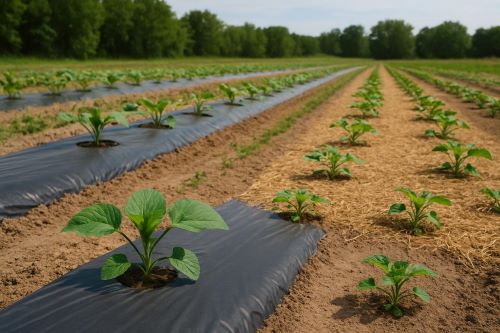
No more leaf spots this monsoon—early fungicide, canopy tweaks, and soil care turned a risky season into my cleanest, greenest yield ever.
Moisture retention on leaf surfaces is the starting point. When leaves remain wet for more than 6 hours, spores of fungi like Cercospora, Alternaria, or Septoria find ideal conditions for germination. These pathogens then enter through stomata or wounds and begin to colonize the tissue.
Three major conditions drive leaf spot outbreaks during rains:
Research from the American Phytopathological Society shows that foliar disease pressure increases by up to 63% during peak monsoon months in tropical zones. Prevention begins before the rain touches the soil.
This season, I didn’t wait for symptoms. I shifted from a curative to a preventive strategy. The most crucial decision was selecting the proper fungicide early in the crop stage—especially one that could persist through high-moisture periods without needing frequent reapplication.
A crucial role was played by the Agriventure Azodifen Fungicide, which I used on day 18 after planting. The product’s formulation enabled long-lasting action on the leaf surface while also being rainfast within one hour of spraying. That meant fewer wash-offs and less stress about timing.
Spraying was followed by strategic canopy management:
Within the first two weeks of the rainy season, neighboring plots were already showing signs of necrotic spots. Mine stayed clean. That’s when I knew early intervention works.
Leaf spot pathogens can survive in crop debris, seeds, and even water splash. Many produce conidia—asexual spores that can multiply within hours under wet conditions. A single lesion can release thousands of conidia, each one capable of starting a new infection site.
Bacterial leaf spots, such as those caused by Xanthomonas, exploit micro-tears on leaf surfaces, particularly after strong winds or pest damage. These bacteria enter and spread through the plant’s vascular system.
Their resilience stems from:
Traditional copper-based sprays often fail because they’re washed away by rain or sunlight, degraded in a day or two. That’s why a fungicide with high retention and systemic action made the most significant difference for me.
“You can’t prevent what you don’t measure; you can’t protect what you don’t understand.”
That quote stayed with me throughout the entire season. I began keeping records of days with rainfall, average humidity, visible symptoms, and pest presence. Over the course of 10 weeks, my log helped me predict flare-ups before they escalated. That’s when I realised—data isn’t just for labs; it belongs in the field.
I didn’t rely solely on chemical fungicides. Monsoon management became a package of actions, each reducing the overall disease risk.
These weren’t just experiments. Data showed a 22% reduction in soil evaporation and zero recurrence of Alternaria symptoms in the final crop stages.
© 2024 Crivva - Business Promotion. All rights reserved.